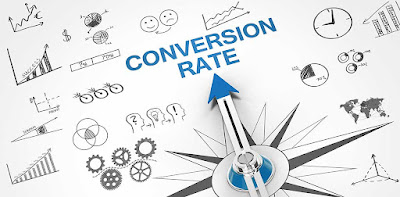Here are 7 transformative strategies that will help you attract the right prospects, engage them effectively, and turn them into loyal customers. By applying a multi-pronged approach across different platforms, you can increase conversions.
#1 - Shorten All Processes for Your Visitors
It's a fast-paced world ... every second counts. Long and complicated processes can lead to high
bounce rates and lost prospects. Focus on
streamlining your visitor's journey. Optimize your website for speed, reduce
the number of steps in your sales funnel, and make the checkout process simple
and intuitive. By providing a smooth and hassle-free experience, you'll
encourage visitors to stay engaged and convert into customers.
#2 – Focus Your Message to Repel the Wrong Prospects
Not all prospects are created equal.
Don't try to appeal to everyone, target your efforts towards attracting
the right audience. Craft your marketing messages and copy in a way that
clearly communicates your brand's values, benefits, and unique selling points. You'll repel the wrong prospects, saving both their time and
yours, while ensuring that those who resonate with your message are more likely
to convert.
#3 - Implement a Controlled Testing Strategy to Enhance
Conversions
Understand that conversion rate optimization is an
ongoing process of refinement. A controlled testing strategy, such as A/B
testing, allows you to experiment with different elements of your marketing
campaigns and landing pages. Test variations of headlines, CTAs, visuals, and
even different color schemes to see what resonates best with your audience.
Through consistent testing and analysis, you'll discover the most effective
combinations that drive higher conversions.
#4 - Cultivate Credible Social Proof
Social proof is one of the most powerful tools for
gaining trust and credibility among your potential customers. Collect and
showcase testimonials, reviews, case studies, and endorsements from satisfied
clients. Also, leverage social media to highlight positive interactions
and engagements with your brand. The more credible social proof you can
show, the more likely prospects will be to convert, knowing that others have
had positive experiences with your products or services.
#5 - Employ a Multifaceted Message Strategy
A one-size-fits-all approach rarely
works in marketing. Tailor your messaging to different segments of your target
audience. Understand their pain points, aspirations, and motivations, and then
create personalized content that speaks directly to them. Utilize various
content formats such as blog posts, videos, infographics, and podcasts to reach
your audience through their preferred channels. A multifaceted message strategy
ensures you connect with your audience on a deeper level, increasing the chances
of conversion.
#6 - Develop a Strong Pre-Sell Technique
Before asking for the sale, focus
on building a relationship with your prospects. Offer valuable content that educates, entertains, and provides solutions to their problems. Anticipate objections and answer them. Nurture leads through email marketing, webinars, and exclusive offers. When
you've established trust and demonstrated your expertise, your prospects will
be more receptive to your sales pitch and more likely to convert.
#7 - Build a Competitive Edge with Persuasion
Persuasive copywriting is an art
form that can significantly impact your conversions. Understand the psychology
behind decision-making and incorporate persuasive techniques into your content.
Use scarcity, urgency, social influence, and storytelling to engage your
audience and nudge them towards action. Reminder: Always ensure that your
persuasive techniques are ethical and aligned with your brand values.
By implementing these seven transformative strategies, you
can increase conversions and enjoy a boost in your earnings. Remember to
continuously monitor your results, adapt to changes in the market, and keep
refining your approach. Marketing is an ever-evolving landscape, and staying
ahead requires creativity, persistence, and a commitment to delivering value to
your audience.






